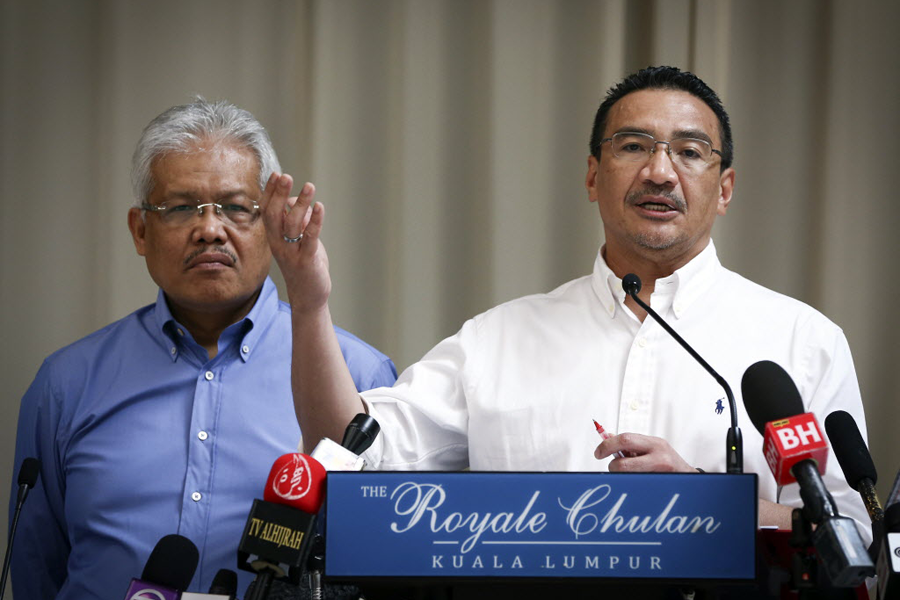MH370 report answers questions about flight's disappearance
Loading...
| KUALA LUMPUR, Malaysia
Air traffic controllers did not realize that Malaysia Airlines Flight 370 was missing until 17 minutes after it disappeared from civilian radar, according to the preliminary report on the plane's disappearance released Thursday by Malaysia's government.
In addition to the five-page report, dated April 9, the government also released other information from the investigation into the flight, including audio recordings of conversations between the cockpit and air traffic control, the plane's cargo manifest and its seating plan.
Malaysia also released a map showing the plane's deducted flight path as well as a document detailing actions taken by authorities in the hours after the Boeing 777 disappeared from radar. The reports were mostly information that has been released since the jet disappeared while flying near the border separating Malaysian and Vietnamese airspace.
The plane went off Malaysian radar at 1:21 a.m. on March 8, but Vietnamese air traffic controllers only queried about it at 1:38 a.m., according to the report, which was sent last month to the International Civil Aviation Organization.
The report also said Malaysian authorities did not launch an official search and rescue operation until four hours later, at 5:30 a.m., after efforts to locate the plane failed.
A separate report listing the actions taken by air traffic controllers showed Vietnamese controllers contacted Kuala Lumpur after they failed to establish verbal contact with the pilots and the plane didn't show up on their radar.
That report also showed that Malaysia Airlines at one point thought the plane may have entered Cambodian airspace. The airline said in the report that "MH370 was able to exchange signals with the flight and flying in Cambodian airspace," but that Cambodian authorities said they had no information or contact with Flight 370. It was unclear which flight it was referring to that exchanged signals with MH370.
Malaysian Prime Minister Najib Razak last week appointed a team of experts to review all the information the government had regarding the missing plane, and to decide which information should be made public.
"The prime minister set, as a guiding principle, the rule that as long as the release of a particular piece of information does not hamper the investigation or the search operation, in the interests of openness and transparency, the information should be made public," Defense Minister Hishammuddin Hussein said in a statement Thursday.
Hishammuddin said Malaysia's military radar tracked the jet making a turn-back in a westerly direction across Peninsular Malaysia after playing back radar data the next morning, nearly seven hours after the plane vanished from civilian radar.
He said he was informed about the military discovery two hours later and relayed this to Najib, who immediately ordered a search in the Strait of Malacca. He defended the military's inaction in pursuing the plane for identification.
"The aircraft was categorized as friendly by the radar operator and therefore no further action was taken at the time," Hishammuddin said.
The preliminary report ends by noting that although commercial aircraft spend considerable amounts of time operating over remote areas, there is currently no requirement for real time tracking of the planes. The report recommends that the International Civil Aviation Organization "examine the safety benefits of introducing a standard for real time tracking of commercial air transport aircraft."
The cargo manifest includes a receipt for a package containing lithium ion batteries, noting that the package "must be handled with care." Some questions had been raised in March about the batteries, but Malaysia Airlines said then that they were in compliance with the International Civil Aviation Organization and the International Air Transport Association requirements and classified as "non-dangerous goods."
Meanwhile, Malaysia Airlines on Thursday advised relatives of passengers who were aboard Flight 370 to move out of hotels and return home to wait for news on the search for the plane.
Since the jet disappeared, the airline has been putting the relatives up in hotels, where they've been briefed on the search. But the airline said in a statement Thursday that it would close its family assistance centers around the world by May 7, and that the families should receive search updates from "the comfort of their own homes."
The airline said that it would establish family support centers in Kuala Lumpur and Beijing, and that it would keep in close touch with the relatives through means including phone calls and meetings.
Malaysia Airlines also said it would soon make advanced compensation payments to the relatives.
The plane vanished during a flight from Kuala Lumpur to Beijing, and most of the 227 passengers were Chinese.
No wreckage from the plane has been found, and an aerial search for surface debris ended Monday after six weeks of fruitless hunting. An unmanned sub is continuing to search underwater in an area of the southern Indian Ocean where sounds consistent with a plane's black box were detected in early April. Additional equipment is expected to be brought in within the next few weeks to scour an expanded underwater area.
The head of the search effort has predicted that the search could drag on for as long as a year.





